News
Shallow water
EEXI
Wind propulsion
Turbulent breakthrough
CFD VIM
Floating Wind
Shortsea shipping
Cover
Create a MARIN account to stay updated


Publications
Examine the navigational safety of inland ships in swallow water
An extensive experimental investigation of shallow and confined water effects
CFD investigation of the effect of water depth on manoeuvring forces
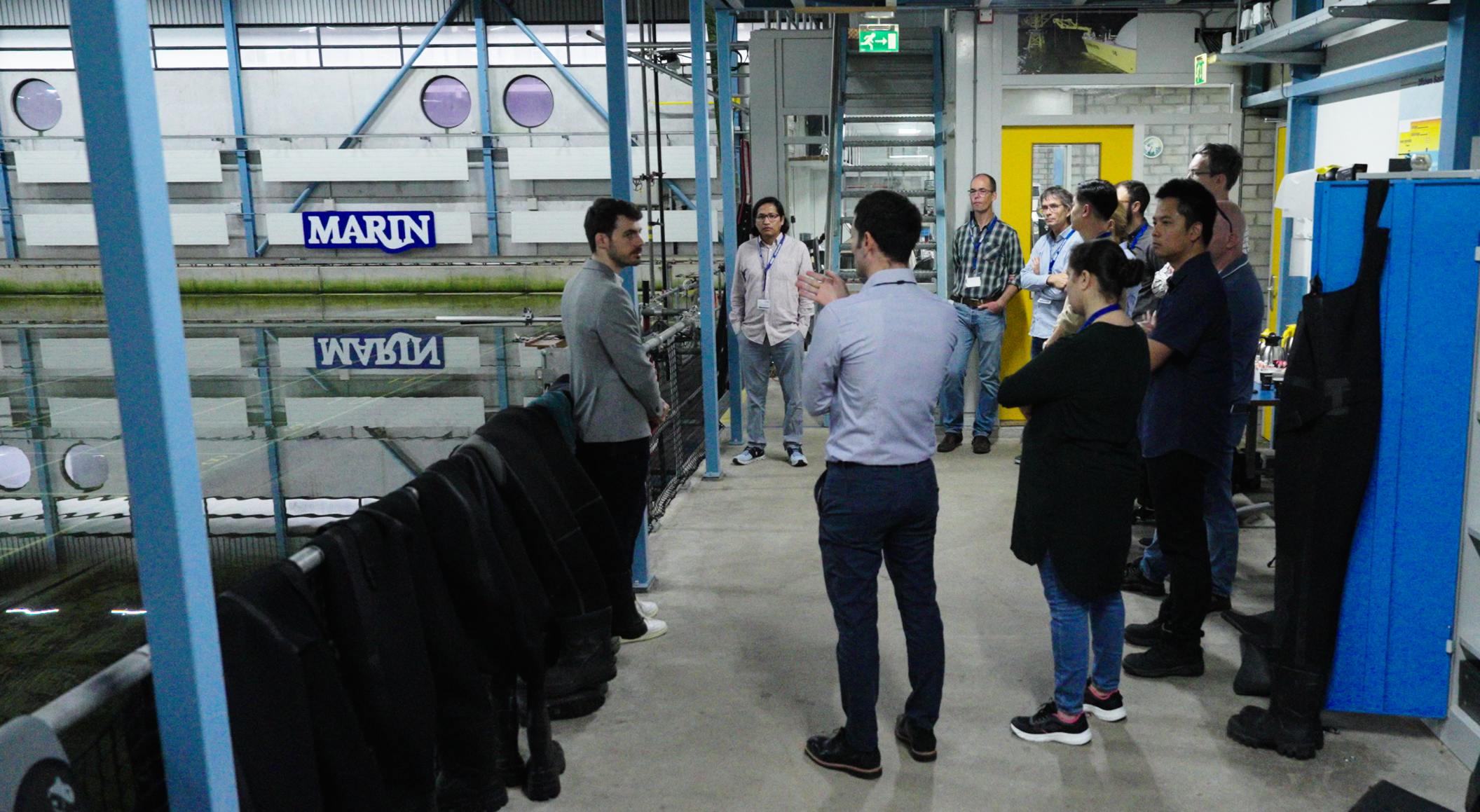
Scale model of a representative 135 m inland ship in the Offshore Basin.
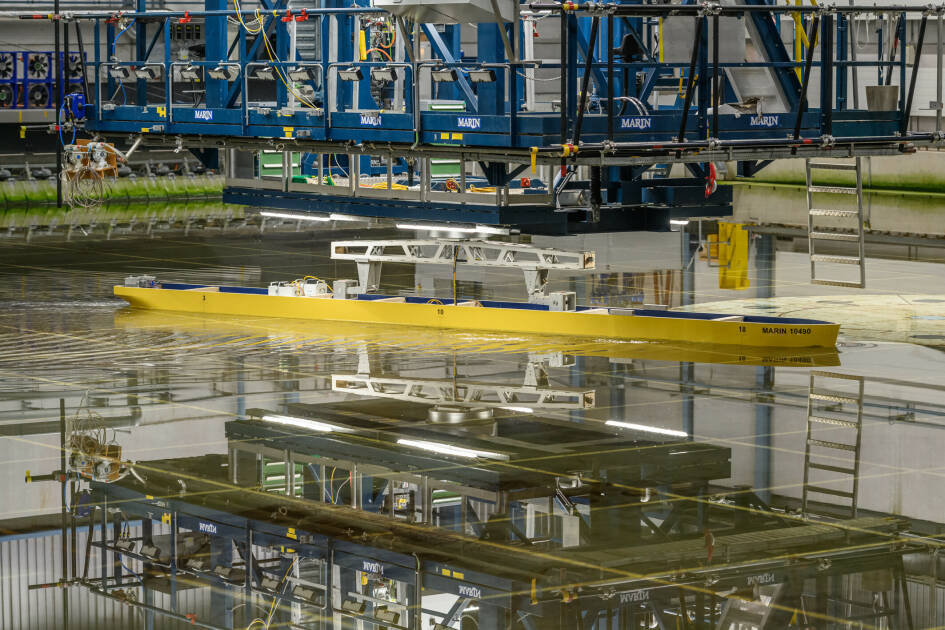
December 2023, no. 138




Report
MARIN aims to provide advanced prediction models of the sailing behaviour of inland ships to support the transformation of inland waterway transport.
With the acceleration of climate change, the role of inland waterways in the European logistics chain will become even more crucial. Inland shipping is seen as a response to the growth in container flow and to the necessity to reduce greenhouse gas emissions from road transport. In the Netherlands, more than 30% of goods are transported on canals and rivers, but there is still a considerable amount of unused capacity in the network. At the same time, the hinterland is facing longer and more intense dry seasons every year. During summertime, ships have to load less cargo on board to be able to sail in shallower waterways.
Shallow and confined waterways
To support the renewal of the sector, MARIN is developing advanced prediction models of the sailing behaviour of inland ships. These models must be reliable for comprehensive and challenging scenarios, including shallow and confined waterways with dense and potentially dangerous traffic situations. The complexity of the underlying physics requires fundamental and applied research that MARIN conducts through its own research programmes and international collaborations.
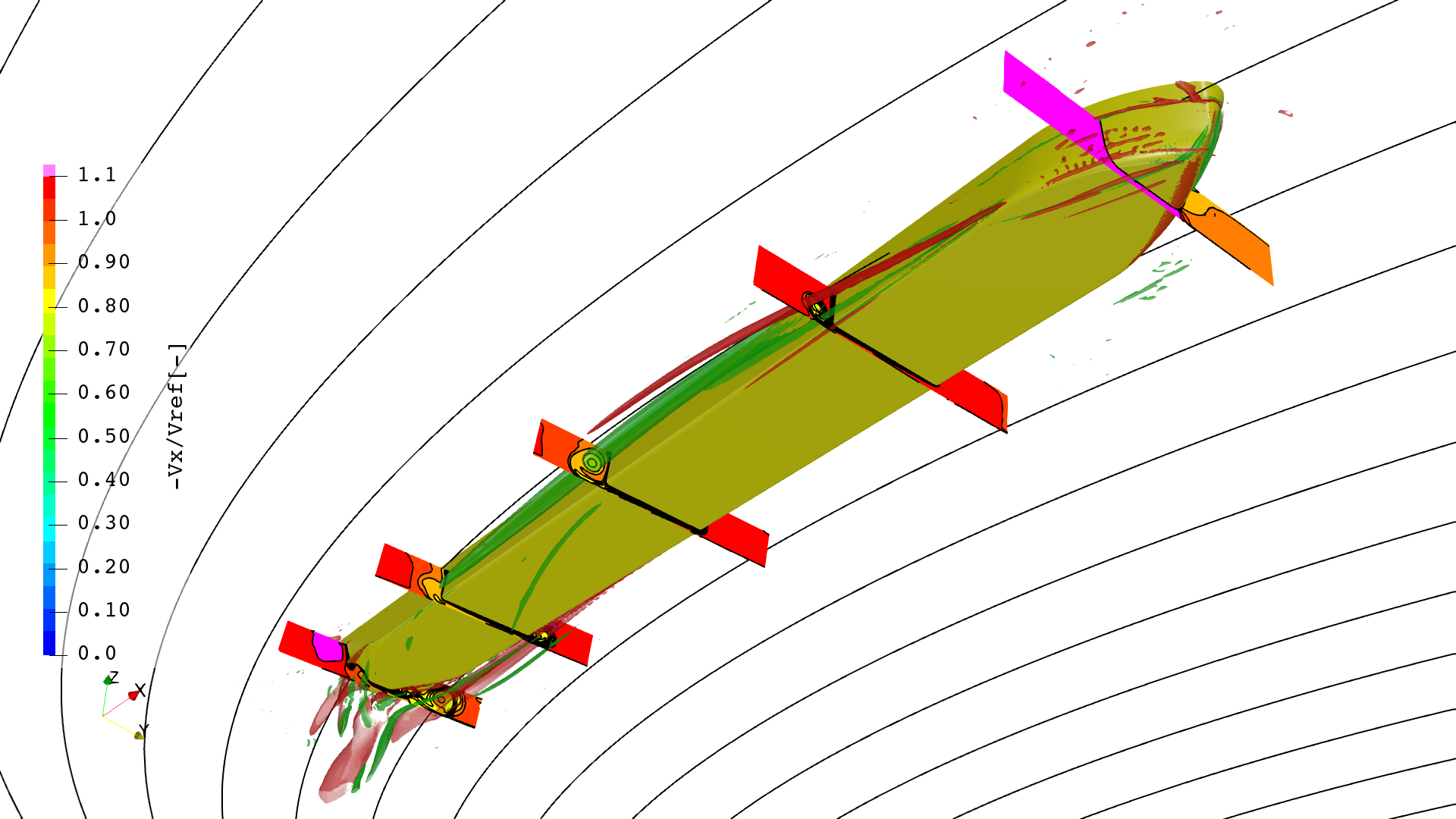
Manoeuvring CFD calculations with the 135 m inland ship to derive its manoeuvring loads in shallow water.
Lahbib Zentari,
Research Engineer, Bundesanstalt für Wasserbau (BAW) – the Federal Waterways Engineering and Research Institute

Ernst Bolt,
Senior Advisor nautical models, Rijkswaterstaat

The development of technologies and models for shallow-water applications is strongly supported by MARIN’s internal research programmes. They include the investigation of advanced numerical techniques, the use of data science for modelling and controls, and the study of hydrodynamic aspects such as ship-bank and bank-bank interactions and the effect of sailing in mud. MARIN is working closely together with Rijkswaterstaat to provide the means to ensure safe and efficient shipping on Dutch inland waterways.
Alongside the numerical activities, MARIN performs captive manoeuvring model tests in shallow water in its Offshore Basin. These experiments are designed to measure hydrodynamic loads acting on a ship and its appendages under a wide range of conditions. The test programme includes variations in draught, speed, drift angle, yaw rate, propeller revolution, rudder angle and water depth.
Results will contribute to derive a high-fidelity simulation model to be used in complex sailing predictions in MARIN’s Seven Ocean Simulator Centre. They also provide a unique insight on the hydrodynamic loads applied to every component of inland propulsion and steering systems, their interactions and shallow-water effects.
SHINING is an international research group of organisations based in the Netherlands (MARIN, Rijkswaterstaat, the authority for the design, construction, management and maintenance of the Netherlands’ primary infrastructure facilities), Germany (BAW, University of Duisburg-Essen, DST) and Belgium (Flanders Hydraulics Research, Ghent University). The common objective is to improve the quality and reliability of sailing predictions for inland ships, bringing together their expertise, resources and facilities. The first investigation focuses on the numerical prediction of manoeuvring loads for a representative 135 m inland cargo ship, typically sailing on the River Rhine.
More info

Captive Manoeuvring Model tests




The development of technologies and models for shallow-water applications is strongly supported by MARIN’s internal research programmes. They include the investigation of advanced numerical techniques, the use of data science for modelling and controls, and the study of hydrodynamic aspects such as ship-bank and bank-bank interactions and the effect of sailing in mud. MARIN is working closely together with Rijkswaterstaat to provide the means to ensure safe and efficient shipping on Dutch inland waterways.
Manoeuvring CFD calculations with the 135 m inland ship to derive its manoeuvring loads in shallow water.
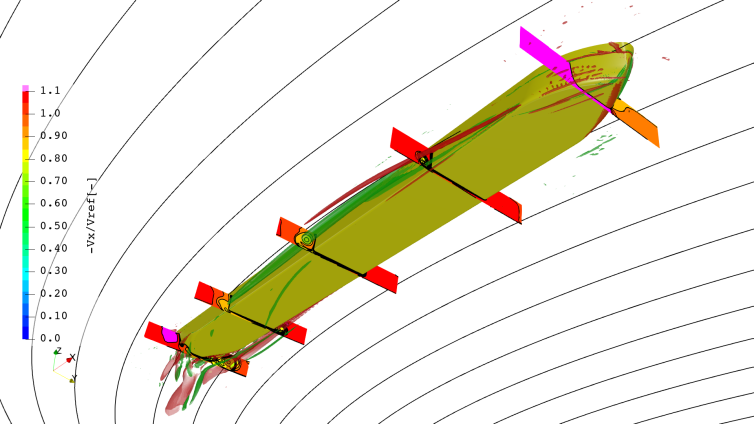
Ernst Bolt,
Senior Advisor nautical models, Rijkswaterstaat

Alongside the numerical activities, MARIN performs captive manoeuvring model tests in shallow water in its Offshore Basin. These experiments are designed to measure hydrodynamic loads acting on a ship and its appendages under a wide range of conditions. The test programme includes variations in draught, speed, drift angle, yaw rate, propeller revolution, rudder angle and water depth.
Results will contribute to derive a high-fidelity simulation model to be used in complex sailing predictions in MARIN’s Seven Ocean Simulator Centre. They also provide a unique insight on the hydrodynamic loads applied to every component of inland propulsion and steering systems, their interactions and shallow-water effects.
Scale model of a representative 135 m inland ship in the Offshore Basin.
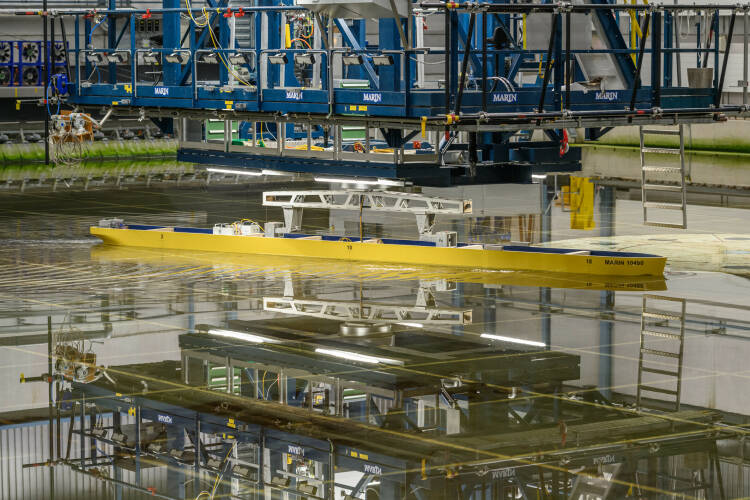
December 2023,
no. 138
Create a MARIN account to stay updated

Captive Manoeuvring Model tests

More info
Lahbib Zentari,
Research Engineer, Bundesanstalt für Wasserbau (BAW) – the Federal Waterways Engineering and Research Institute

SHINING is an international research group of organisations based in the Netherlands (MARIN, Rijkswaterstaat, the authority for the design, construction, management and maintenance of the Netherlands’ primary infrastructure facilities), Germany (BAW, University of Duisburg-Essen, DST) and Belgium (Flanders Hydraulics Research, Ghent University). The common objective is to improve the quality and reliability of sailing predictions for inland ships, bringing together their expertise, resources and facilities. The first investigation focuses on the numerical prediction of manoeuvring loads for a representative 135 m inland cargo ship, typically sailing on the River Rhine.
Shallow and confined waterways
To support the renewal of the sector, MARIN is developing advanced prediction models of the sailing behaviour of inland ships. These models must be reliable for comprehensive and challenging scenarios, including shallow and confined waterways with dense and potentially dangerous traffic situations. The complexity of the underlying physics requires fundamental and applied research that MARIN conducts through its own research programmes and international collaborations.
With the acceleration of climate change, the role of inland waterways in the European logistics chain will become even more crucial. Inland shipping is seen as a response to the growth in container flow and to the necessity to reduce greenhouse gas emissions from road transport. In the Netherlands, more than 30% of goods are transported on canals and rivers, but there is still a considerable amount of unused capacity in the network. At the same time, the hinterland is facing longer and more intense dry seasons every year. During summertime, ships have to load less cargo on board to be able to sail in shallower waterways.
MARIN aims to provide advanced prediction models of the sailing behaviour of inland ships to support the transformation of inland waterway transport.




CFD investigation of the effect of water depth on manoeuvring forces
An extensive experimental investigation of shallow and confined water effects
Examine the navigational safety of inland ships in swallow water

Publications
Report





